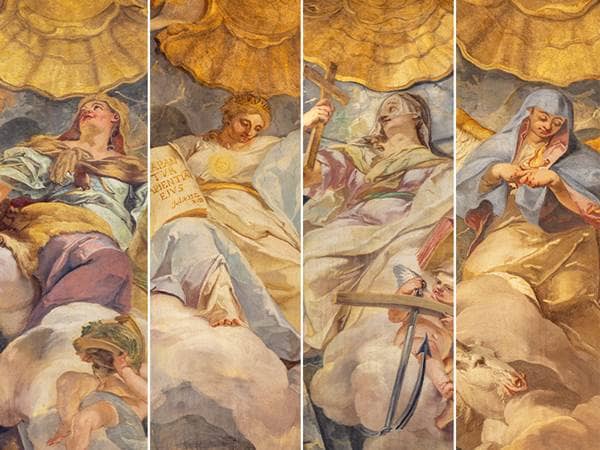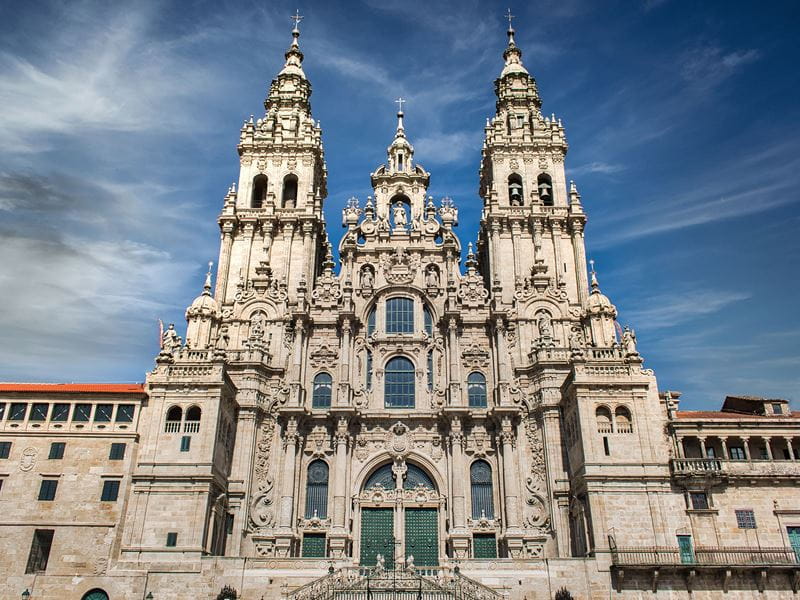
- Trending:
- Pope Leo Xiv
- |
- Israel
- |
- Trump
- |
- Social Justice
- |
- Peace
- |
- Love
The 100 Most Holy Places On Earth
Cathedral of Santiago de Compostela

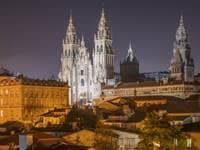
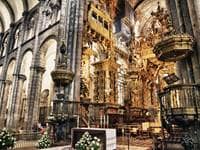
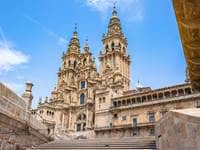
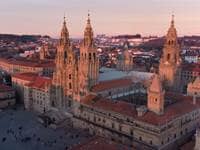
Associated Faiths:
Roman Catholicism
Also ocassionally visited by Christians of other High-Church traditions, though not as much by those of Low-Church traditions.
Accessibility:
Open to visitors.
Annual visitors: 350,000
History
Santiago de Compostela Cathedral is an 11th century basilica in Galicia, Spain. It has been a popular pilgrimage site for European Christians for more than 1,000 years. It has been called “the third most holy place of pilgrimage in the Catholic Church after Rome and Jerusalem”—in all probability because the Archcathedral was constructed over what legend says is the body of Saint James.
A legend, recorded in Latin texts as early as the 7th century AD, tells of the Apostle James the Great (the brother of Jesus) successfully preaching the gospel in Spain, prior to returning to Jerusalem—where Herod Agrippa I had him imprisoned and beheaded. The textual tradition speaks of his friends placing his body in a boat and, through the assistance of angels, conveying it back to Spain, where James was buried. One 12th century text, recounting this same story, claims that a bright light was seen by Pelagius the Hermit, who followed it, and which led to the discovery of the long-lost grave of James (circa 814 AD).
In AD 899, a recently completed basilica—constructed over the grave of the apostle—was consecrated. However, less than 100 years later (AD 997), Muslim locals leveled the edifice, leaving only the tomb of Saint James undamaged. Eighty years later (AD 1077-1078) construction of a new church on the site began. That basilica was consecrated in AD 1211. While the 13th century structure still stands, it has had Romanesque, Gothic, Baroque, and Neoclassical additions over the years. For example, in the early 1800s, a Baroque façade was added to the building.
Because of the building’s connection to Saint James (of the Bible), it is also part of the famous Camino de Santiago (or “the pilgrim’s way”). Staring in the Middle Ages, each year pilgrims (beginning their pilgrimage high up in the French Pyrenees) make a 500-mile trek to Santiago de Compostela Cathedral. Having engaged in a period of significant privation, they enter the edifice through the Pórtico da Gloria (or “portal of glory”)—where they participate in a special pilgrims’ Mass. This annual event is so popular, even non-Christians are prone to engage, as it tends to be as much of a cultural experience, as it is religious. Monks, the penitent sinner, backpackers, and agnostics each love to engage in this trek—and each for his or her own reasons. It tends to be a pilgrimage, a spiritual encounter, a lesson in history, and a community adventure, all rolled into one.
Religious Significance
In Roman Catholicism, sites at which Christian martyrs have been slain or buried have always been venerated as holy. Because saints are holy, that which is associated with their touch is often seen as sacrosanct. Hence, the common Catholic fascination with relics. Well, graves are the ultimate object “touched” by the saint who occupies it. For pilgrims, the grave of James—much like the tomb of any saint—is “sacred space” as a member of the Holy Family is buried therein.
Legends about Saint James abound in Spain. He is a patron of Spain. And part of that may center around legends of his activities there. Not only do the Spaniards claim that James came and introduced Christianity to the people of Spain (through his first century missionary work), but they also claim that he has appeared there since his martyrdom. One tradition tells of the 11th century Spanish King Ramiro who was struggling against the Muslim Moors. At the Battle of Clavajo (AD 844), the martyred Saint James appeared to the king, fought alongside of he and his army, and is said to have slayed 60,000 Moorish soldiers, winning the battle for Spain. Such legends have created a love for Saint James by the Spanish people, and have increased the popularity of pilgrimages to the site of his grave at the Santiago de Compostela Cathedral.
The annual 500-mile pilgrimage, from the Pyrenees to the tomb of Saint James, is noteworthy. Pilgrims walk for weeks and, in some cases, months to compete the trek. And why would they choose to suffer such privation and hardship, simply to visit a church and a grave of someone they never knew? Well, the answer is that they believe in the concept of “sacred space.” They believe that holy humans have walked this earth, that outstanding examples of what it means to live and die as a Christian are known and locatable. Pilgrims generally believe that, through their sacrifice, their small offerings might be accepted by God, a spiritual “experience” might be had, and their salvation just might be secured. Because they believe something sacred—someone sacred—lies beneath the church, to make the trek and to stand on that hallowed ground is perceived as a sacred privilege worth every bit of sacrifice that it requires.
James’ life, like that of his brother (Jesus), was one of self-privation, one of sacrifice and the eventual laying down of his life for his witness of the faith. A life which so fully imitates the life of Jesus is always hard to fathom—as He was the perfect man, and we are all fallen souls. However, Jesus’ stepbrother, half-brother, or whatever you wish to call him, was 100% human. He was not divine, like his brother. Thus, he lived a normal life. He sinned like us all. And so, Saint James is one worthy to emulate. He sets an example for all Christians of self-sacrifice, of evangelization, of service, and ultimately of dying “the good death.” The Santiago de Compostela Archcathedral Basilica is a monument to a human life perfectly lived. It is an invitation to every pilgrim who traverses its “sacred space” to be a bit better, do a bit more, and to die more holy than when we entered this fallen world. That is the sacred purpose of all of our mortal journeys.



